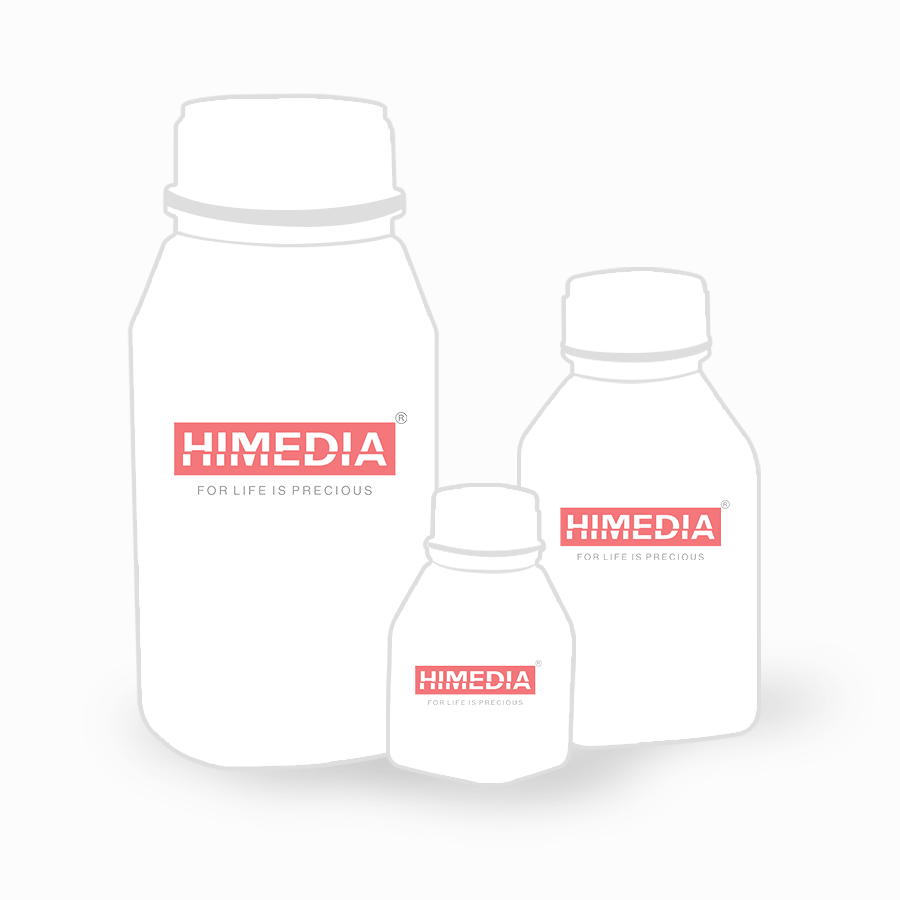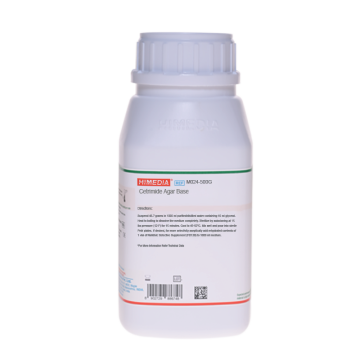 Your enquiry has been submitted
Your enquiry has been submitted
Acetamide Agar (Twin Pack)
Intended Use
Recommended for confirmation of Pseudomonas aeruginosa in water samples.
Composition
| Ingredients | Gms / Litre |
|---|---|
| Part A | |
| Acetamide | 10.000 |
| Part B | |
| Sodium chloride | 5.000 |
| Dipotassium hydrogen phosphate | 1.390 |
| Potassium dihydrogen phosphate | 0.730 |
| Phenol red | 0.012 |
| Magnesium sulphate | 0.500 |
| Agar | 15.000 |
Final pH (at 25°C): 7.0±0.2
**Formula adjusted, standardized to suit performance parameters
Directions
Suspend 22.63 grams of part B in 1000 ml purified / distilled water. Add 10.0 grams of Part A. Heat to boiling to dissolve the medium completely. Dispense in tubes or flasks as desired. Sterilize by autoclaving at 15 lbs pressure (121°C) for 15 minutes. Cool the tubes in a slanted position.
Principle And Interpretation
Acetamide Agar is formulated as per the recommendation of Standard Methods for the Examination of Water and Wastewater (1). Gilardi and others showed that a wide variety of non-fermenting organisms were capable of utilizing acetamide by using basal mineral media (3,11). However very few organisms growing in the medium metabolize acetamide by the process of deamination (acrylamidase activity) (8,9). This unique ability is useful in identification of various non-fermenting gram- negative organisms (2,4,10). This ability is shown by Pseudomonas aeruginosa, Pseudomonas aciovorans Group III (Achromobacter xylosoxidans) and Alcaligenes odorans (7). Acetamide deamination leads to the liberation of ammonia, which thereby increases the pH of the medium, leading to a subsequent colour change of the phenol red indicator from yellow orange to purplish red. Some strains require upto seven days to exhibit a positive reaction as they deaminate acrylamide slowly.
However, only about 40% of apyocyanogenic strains of Pseudomonas aeruginosa exhibit a positive reaction. It is therefore, not advisable to rely on this test as the only criterion for identification.
The medium contains inorganic salts and acetamide a sole carbon and nitrogen source. Sodium chloride maintains the osmotic equilibrium. Phenol red is the pH indicator.
Type of specimen
Water samples
Specimen Collection and Handling
For water samples, follow appropriate techniques for sample collection, processing as per guidelines and local standards (1). After use, contaminated materials must be sterilized by autoclaving before discarding.
Warning and Precautions
Read the label before opening the container. Wear protective gloves/protective clothing/eye protection/ face protection. Follow good microbiological lab practices while handling specimens and culture. Standard precautions as per established guidelines should be followed while handling clinical specimens. Safety guidelines may be referred in individual safety data sheets.
Limitations
- Some strains require upto seven days to exhibit a positive reaction as they deaminate acrylamide slowly.
Performance and Evaluation
Performance of the medium is expected when used as per the direction on the label within the expiry period when stored at recommended temperature.
Quality Control
Appearance: Part A:Colourless deliquescent crystals Part B: Light yellow to brick red homogeneous free flowing powder
Gelling: Firm, comparable with 1.5% Agar gel
Colour and Clarity of prepared medium: Orange coloured clear to slightly opalescent gel forms in tubes as slants.
Reaction: Reaction of the medium (Mixture of 1% w/v Part A and 2.263% Part B)at 25°C. pH: 7.0±0.2
pH: 6.80-7.20
Cultural Response
Cultural characteristics observed after an incubation at 35-37°C for 4-7 days.
| Organism | Inoculum (CFU) | Growth | Deamination |
|---|---|---|---|
| Stenotrophomonas maltophila ATCC 13637 | 50-100 | good-luxuriant | negative reaction,no purplish red colour within 7 days |
| Pseudomonas aeruginosa ATCC 27853 (00025*) | 50-100 | good-luxuriant | positive reaction, purplish red colour within 7 days |
Key : (*) Corresponding WDCM numbers.
Storage and Shelf Life
Store between 10-30°C in a tightly closed container and the prepared medium at 20-30°C. Use before expiry date on the label. On opening, product should be properly stored dry, after tightly capping the bottle in order to prevent lump formation due to the hygroscopic nature of the product. Improper storage of the product may lead to lump formation. Store in dry ventilated area protected from extremes of temperature and sources of ignition. Seal the container tightly after use. Product performance is best if used within stated expiry period.
Disposal
User must ensure safe disposal by autoclaving and/or incineration of used or unusable preparations of this product. Follow established laboratory procedures in disposing of infectious materials and material that comes into contact with sample must be decontaminated and disposed of in accordance with current laboratory techniques (5,6).
Reference
- Baird R.B., Eaton A.D., and Rice E.W., (Eds.), 2015, Standard Methods for the Examination of Water and Wastewater, 23rd ed., APHA, Washington, D.C.
- Buhlmann, Vischer and Bruhin, 1961, J. Bacteriol., 82:787
- Gilardi, 1974, Antonie Van Leeuwenhoek, J. Microbiology Serol., 39:229.
- Hedberg, 1969, Appl. Microbiol., 17: 481.
- Isenberg, H.D. Clinical Microbiology Procedures Handbook 2nd Edition.
- Jorgensen, J.H., Pfaller, M.A., Carroll, K.C., Funke, G., Landry, M.L., Richter, S.S and Warnock., D.W. (2015) Manual of Clinical Microbiology, 11th Edition. Vol. 1.
- Oberhofer and Rowen, 1974, Appl. Microbiol., 28:720.
- Pickett M. J. and Pedersen M.M., 1970, Can. J. Microbiol., 16:351.
- Pickett M. J. and Pedersen M.M., 1970, Can. J. Microbiol., 16:401.
- Smith and Dayton, 1972, Appl. Microbiol., 24: 143
- Stainier, Palleroni and Doudoroff, 1966, J. Gen Microbiol., 43:159.
| Product Name | Acetamide Agar (Twin Pack) |
|---|---|
| SKU | M1033 |
| Product Type | Regular |
| Physical Form | Powder |
| Origin | Chemically defined |
| Packaging type | HDPE |
| References | 1. Eaton A. D., Clesceri L. S., and Greenberg A. W., (Eds.), 1995, Standard Methods for the Examination of Water andWastewater, 21st Ed., APHA, Washington, D.C. |
| Customized Product Available | No |








